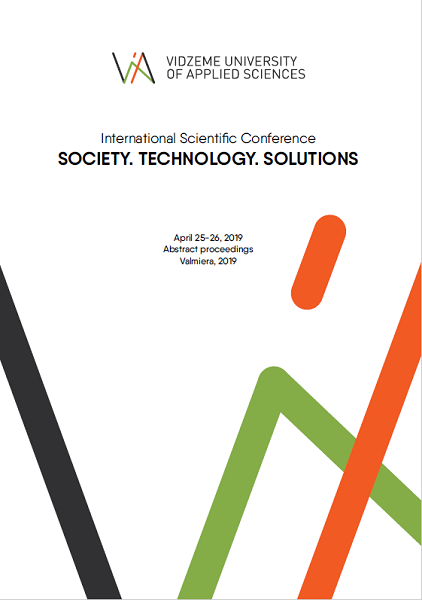TALENT RETENTION, ATTRACTION AND THE REQUIRED FUTURE SKILLS FOR EMPLOYEES IN WINNING CITIES IN RURAL REGIONS
DOI:
https://doi.org/10.35363/ViA.sts.2019.20Keywords:
Talent attraction, winning cities, small and medium urban area, future skills, focusAbstract
INTRODUCTION
The article intends to identify the factors that can retain talented people and attract new talent in small and medium-sized urban areas of European scale, especially in regions with declining and ageing populations. The problem is topical in today's Europe and as well as in Japan. It is equally important to understand the skills needed and the sectors where talents are required in small and medium-sized urban areas with an ascending development trend.
The theoretical background of the research is based on literature studies on the theory of talent flow, knowing the factors of the talent flow in small and medium-sized cities, and building the talent flow models based on them. The article discusses the concept of talent (Michaels et al. 2001, several dictionaries, understanding of Valmiera residents). The researchers define that talented people fascinate others, create and implement ideas and have good reasoning skills. Until now, mainly in Europe and in the USA, the attraction of talent at the level of cities and regions has been implemented through migration policy. The administrative boundaries where the migrant talents come from are not as important as the factors that encourage the decisions on the choice of the place of living and work.
In Estonia a National Policy for Attracting and Retaining International Talents (2014) has been developed. The findings of the report on models for attracting talent in Europe through the public sector are relevant to small and medium-sized urban areas.
In the case study, there are no respondents representing a migrant group that is not a diaspora, and this is a specific feature of a small and medium-sized urban area.
MATERIALS AND METHODS
The empirical part has been developed through a study in Valmiera City (Latvia, Europe) with a population of 23 thousand inhabitants, aiming at increasing this number by 5000 and further boosting growth in the city's competitiveness in human resources. A survey of 25 experts was conducted initially to highlight the trends. In order to obtain the data, 29 interviews were conducted with the city's entrants, outgoing residents and the steady, already stable and welcoming residents of Valmiera. Also, an online survey of 81 university graduates was carried out to find out the major reasons for staying in or leaving the regional city of Valmiera.
The research city of Valmiera was compared to Ventspils, Rezekne and Jelgava in Latvia, as well as to two foreign cities in Northern Europe – the nearest neighbouring city of Tartu in Estonia and Joensuu in Finland. The cities were compared by socio-economic factors - population dynamics, economic development, access to culture, and political stability, which are important factors in attracting talent.
The research methodology is based on the theoretical findings of Ingram, Shapiro, Albouy on the impact of four dimensions in talent attraction: economic development, market competition, labour market conditions and national culture, as well as the impact of lifestyle on choice. According to these dimensions, interview questions have been developed, and, by grouping the content, the analysis of the responses has been carried out.
The previous study by the authors has been used as a secondary source. The study focused on the future skills needed for the labour force in the Vidzeme region in Latvia, and the compliance of the proposed education with the labour market requirements in the Vidzeme region of Latvia.
RESULTS
The results of the research show that a job offer providing the applicant the possibility to demonstrate his capacity and pursue his or her objectives is of primary importance for the recruitment of skilled labour in a winning city in a rural area, followed by the appropriate housing and transport, and social infrastructure. As a secondary factor, lifestyle, which includes diversity, cultural environment, architecture and the presence of the natural environment, is important. The importance of the factors of attraction varies according to the stage of human life.
DISCUSSION
The results of the interviews show that small and medium-sized urban areas have the potential to attract talented human resources, taking into account the key attraction factors described in the theory.
The empirical analysis in the example of Valmiera reveals that a significant attraction factor in small and medium urban areas is social ties with the area. The labour market demand is also an important factor.
The results of the research revealed that in certain occupational groups in Valmiera (such as managers, social sciences in general), the labour market demand is lower than the supply.
In further research it would be necessary to carry out focus group interviews with migrants in small and medium-sized urban areas in order to find out the important factors in taking a decision on their choice of residence.
CONCLUSION
Small and medium-sized urban areas need to develop diversity and openness. This initiative needs to be strengthened both in the operation and investments of a municipality and in communication with the public. Virtually all of the examples discussed refer to migration as inevitable in attracting talent – highly skilled people.



